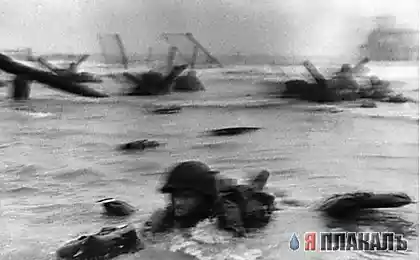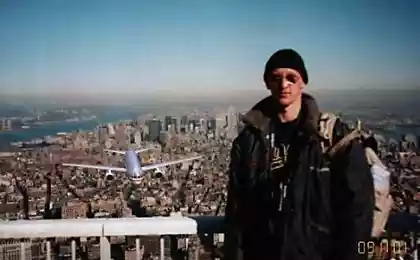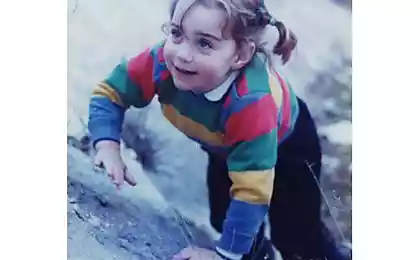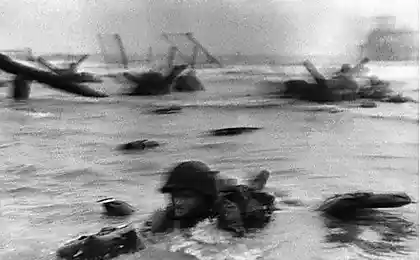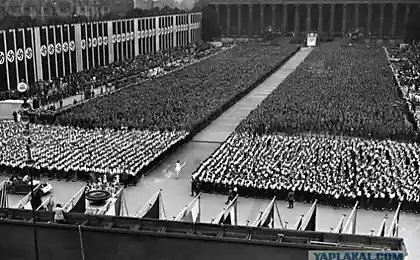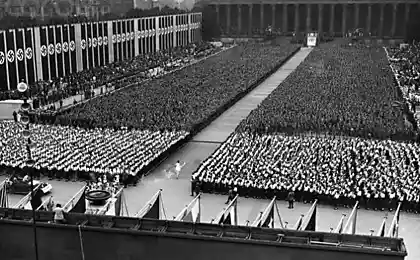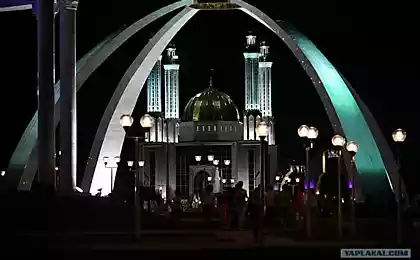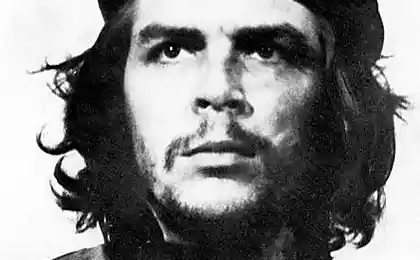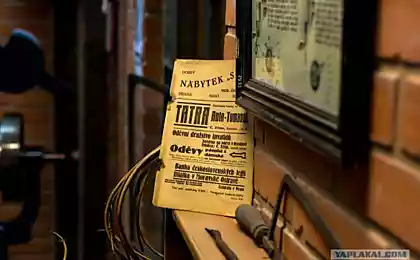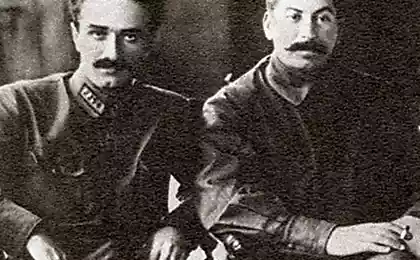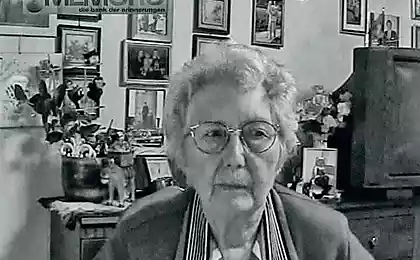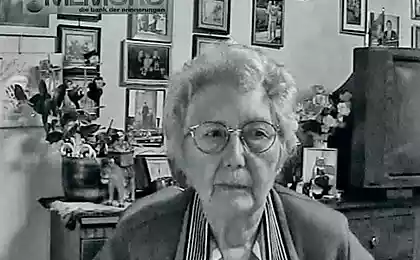1279
Europe in 1936
1936 was marked in history as a year of rather alarming. In Europe, the brewing war, fascist Italy invaded Ethiopia, the Spanish fascist forces raising a rebellion against the government, heavily armed with Nazi Germany. In short ambulances horrors of the Nazi regime for many it is already evident, but no one in the West to refuse Olympics in Germany. With 49 countries and 3961 athletes, these Games have set a new record for number of participants. The star of the Olympics has become an African-American Jesse Owens, who won four gold medals.

Meanwhile, the Germans are busy, how to determine the race, such as eye color:
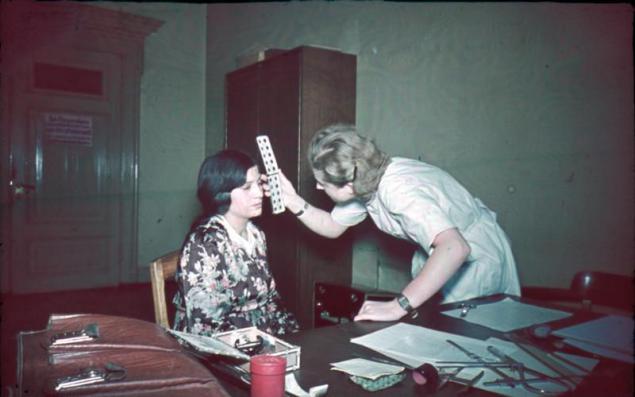
In February 1937 in the Journal of the American National Geographic published a long article "A Changing Berlin", illustrated with colored pictures of the two authors * Hans Hildenbrand and Wilhelm Tobien), made in the previous Olympic year. On the occasion of the Games the city is decorated with the flags of different countries:
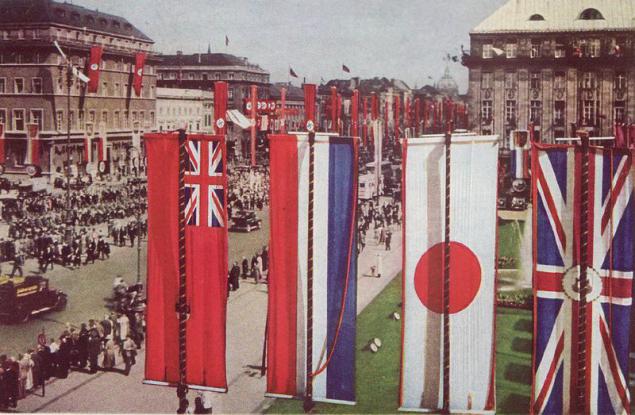
On most conventional frames, the daily life of a great European metropolis. But the abundance of banners with the swastika does not allow to forget about the era:
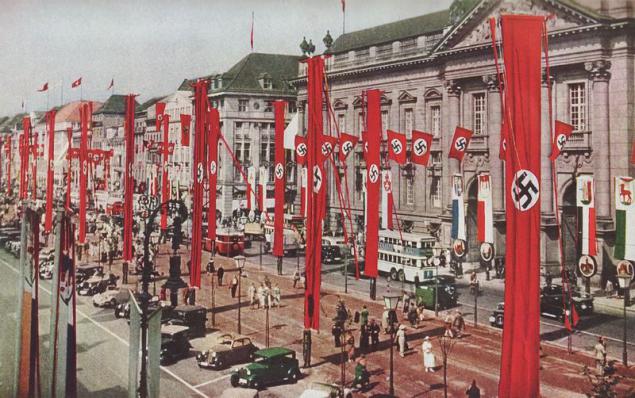
In one of the recreational areas of Berlin 1936:

Mobile post office:
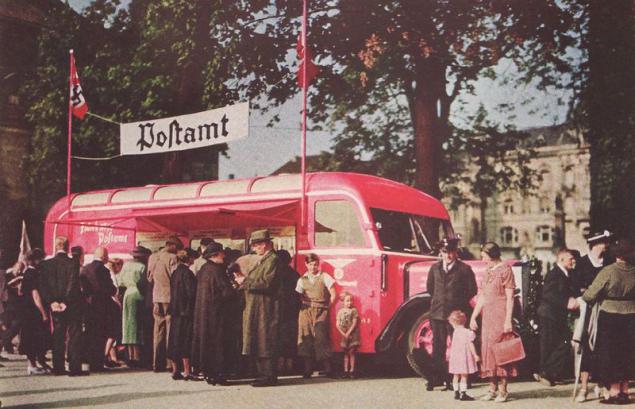
Airport Templhof near Berlin:
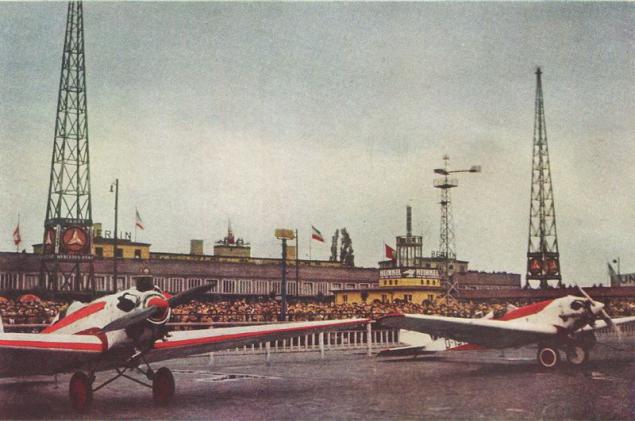
School model shipbuilding in Potsdam:
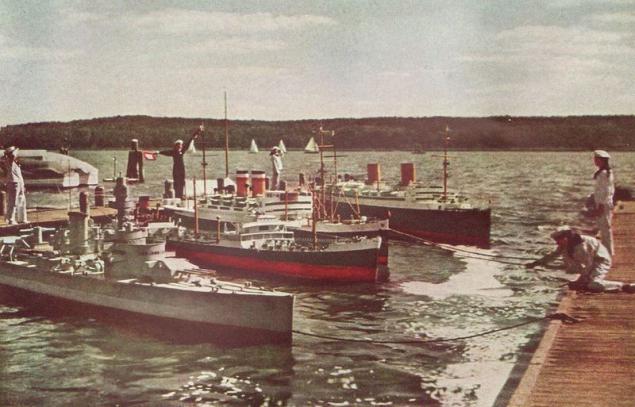
These pictures were taken on film Agfakolor but printing technology made them almost in the rough coloring. German gas station 1936:
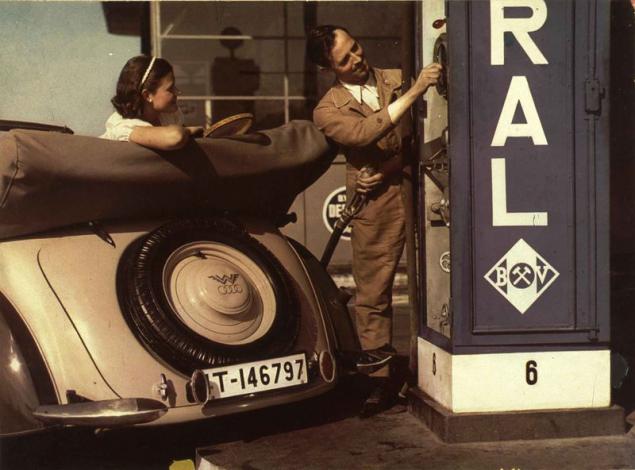
This quality color images 1936 can be seen except in the work of the Dutchman Bernard Eilers, who used the method of separations (synchronous shooting on three plates through the filters). He shot in various European countries, his pictures in 1936 are the Netherlands and Belgium. Celebration in honor of the royal family at the stadium in Amsterdam:
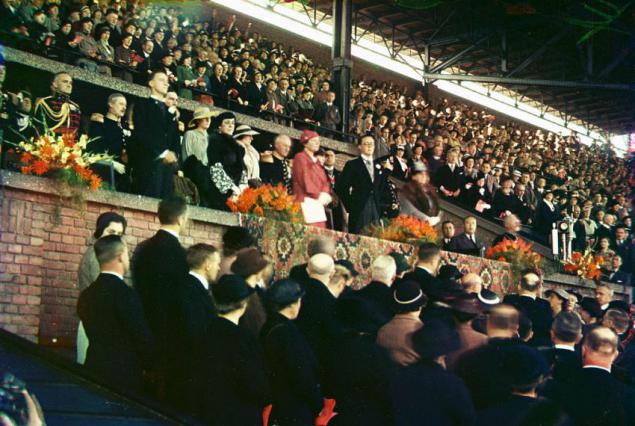
Typical view of Amsterdam, both in 1936 and in 2013:
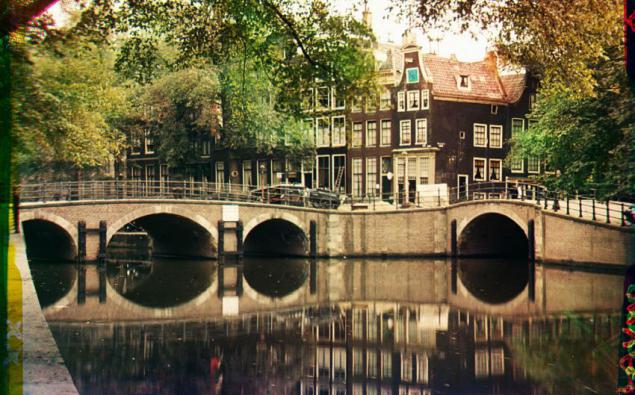
Old Bruges in 1936, too, can hardly be distinguished from the present:
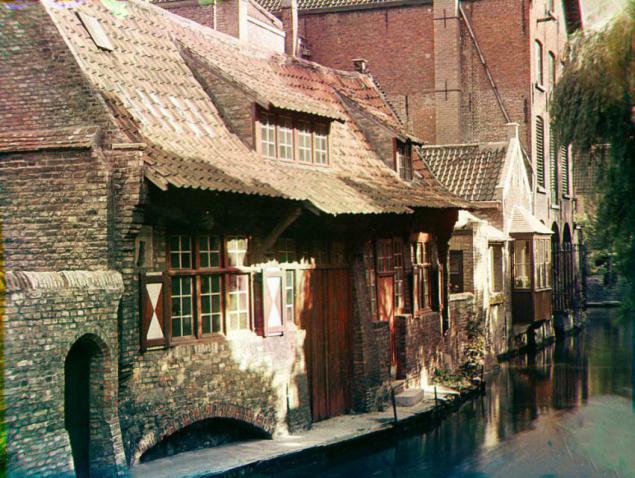
Much better signs of the times can be seen in the photo of the Dutch city of Hilversum:
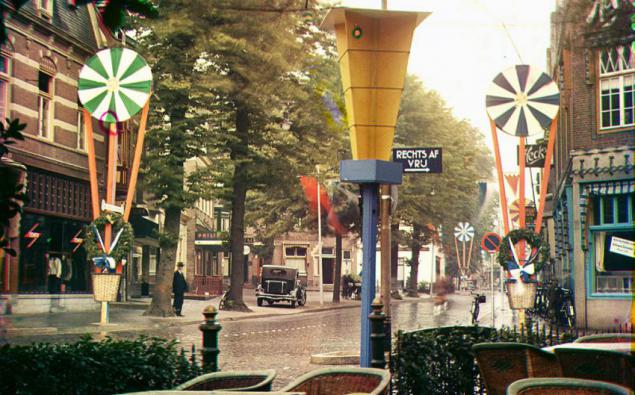
This is the "time machine", you can plunge into the atmosphere. Another view of the same Hilversum:
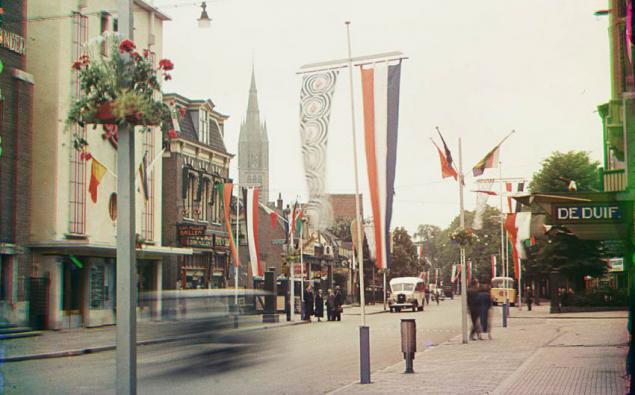
While filming and synchronous by three plates, the exposure time is still too big for reportage pictures:

Then go back pictures taken on color film or plate Autochrome. Neighborhood Gateways in Stockholm 1936:
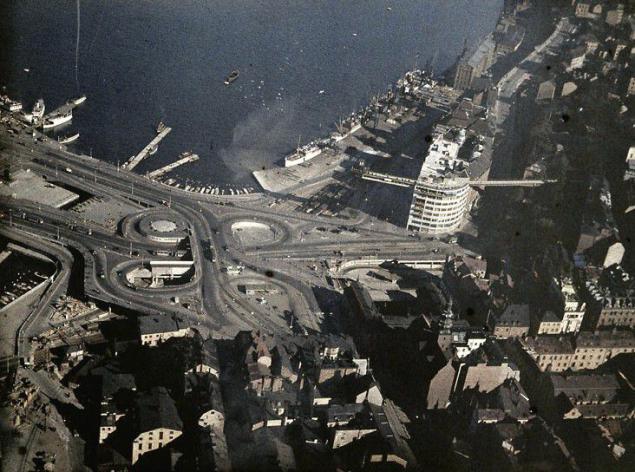
In France, in 1936 an unprecedented influx of holidaymakers: the Socialist government of Leon Blum pushed through a package of social laws and workers en masse for the first time to go on holiday to the seaside. Beach at Trouville, 1936:
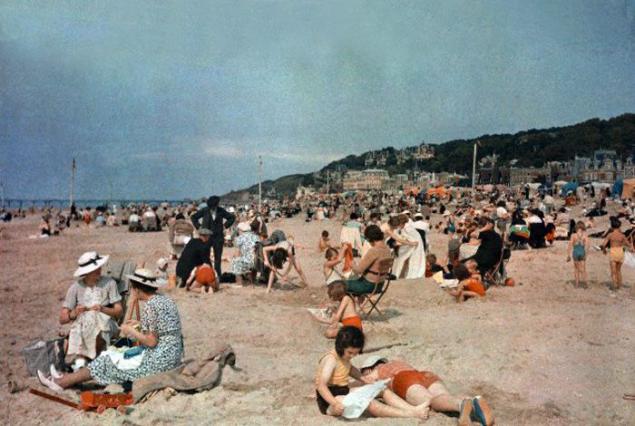
On the beach in Deauville (Robert Moore / National Geographic Society / Corbis):
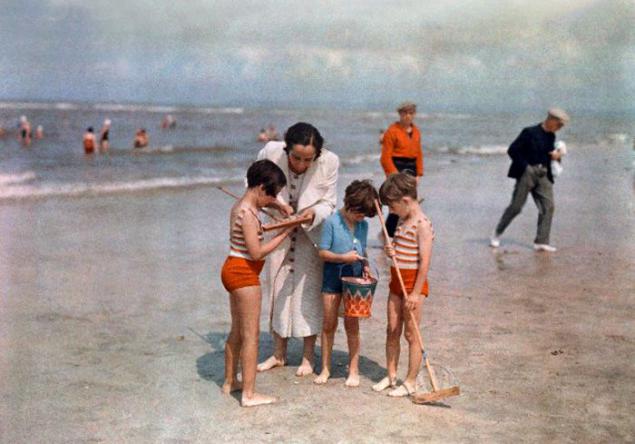
Source: visualhistory.livejournal.com

Meanwhile, the Germans are busy, how to determine the race, such as eye color:

In February 1937 in the Journal of the American National Geographic published a long article "A Changing Berlin", illustrated with colored pictures of the two authors * Hans Hildenbrand and Wilhelm Tobien), made in the previous Olympic year. On the occasion of the Games the city is decorated with the flags of different countries:

On most conventional frames, the daily life of a great European metropolis. But the abundance of banners with the swastika does not allow to forget about the era:

In one of the recreational areas of Berlin 1936:

Mobile post office:

Airport Templhof near Berlin:

School model shipbuilding in Potsdam:

These pictures were taken on film Agfakolor but printing technology made them almost in the rough coloring. German gas station 1936:

This quality color images 1936 can be seen except in the work of the Dutchman Bernard Eilers, who used the method of separations (synchronous shooting on three plates through the filters). He shot in various European countries, his pictures in 1936 are the Netherlands and Belgium. Celebration in honor of the royal family at the stadium in Amsterdam:

Typical view of Amsterdam, both in 1936 and in 2013:

Old Bruges in 1936, too, can hardly be distinguished from the present:

Much better signs of the times can be seen in the photo of the Dutch city of Hilversum:

This is the "time machine", you can plunge into the atmosphere. Another view of the same Hilversum:

While filming and synchronous by three plates, the exposure time is still too big for reportage pictures:

Then go back pictures taken on color film or plate Autochrome. Neighborhood Gateways in Stockholm 1936:

In France, in 1936 an unprecedented influx of holidaymakers: the Socialist government of Leon Blum pushed through a package of social laws and workers en masse for the first time to go on holiday to the seaside. Beach at Trouville, 1936:

On the beach in Deauville (Robert Moore / National Geographic Society / Corbis):

Source: visualhistory.livejournal.com
